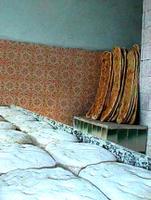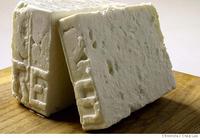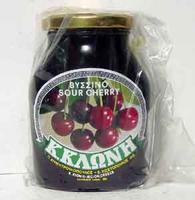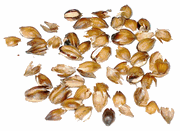
Vasco. Well, just skip it. Noisy, slow and mistaken service. Food - ho hum. On the bright side, it sits on a cozy corner in Mill Valley.
Dad did like the ice cream sandwich cookies for dessert though.
Thursday, June 30, 2005
Posted by
Anna Haight
at
8:26 PM
0
comments
![]()
Labels: Italian, Mill Valley
Big disappointment. For an unfortunate reason, I visited Seattle again earlier this month. My Aunt Winona passed. But it was a great opportunity to visit with relatives and get reacquainted with my many wonderful cousins. I spent some extra time with my cousin Shirley (Winona's daughter) going over her geneological research, and what I could remember of my efforts.
Shirley has really dug deep and verified a lot of facts, and debunked a favorite family legend. I was often reminded growing up that I was related to Sir Francis Drake, through my great-grandmother, Susan Drake, and I thought it rather romantic to be related to such a famous pirate! My father spent a lot of time reading about him, and was quite happy to find that there is a street named after him nearby in Marin, Sir Francis Drake Blvd. - and that the reason is because he actually voyaged here. Oh well. Big disappointment.
Apparently, we are rather related to a Dutch family that lived in New Amsterdam (New York city) named Draat? (I'll have to get the exact spelling from my cousin). So now that I've discovered some Dutch roots, I'll have to post a very homey Dutch recipe for Stamppot. Stamppot originated in the Dutch farmlands and there are many varieties. Basically, its boiled mashed potatoes with other interesting ingredients mashed right on in! And often some kind of sausage placed on top. Kale and endive are very popular stampot ingredients, and the result is quite delicious if you can get over eating a very green shade of potatoes.
Here's one recipe I like that uses carrots:
Hollandse Winter Stamppot 
8 large wither carrots, peeled and sliced
3 very large onions, peel and cut into rings
3-4 cups water
1 tsp salt
1 tsp margarine (sunflower is preferred)
10 medium potatoes, peeled and cut up
3/4 cup margarine (again, sunflower is preferred)
1 cup pure maple syrup
Place the carrots and onions in a 6-quart Dutch oven, along with the water, 1 tsp salt and 1 tsp margarine. Boil until tender. Meanwhile, boil the potatoes until tender in a separate pot.
Drain the carrots and onions, reserving 1/3 cup of the boiling liquid. Return the carrots, onions and 1/2 cup reserved liquid to the Dutch oven. Drain the potatoes and add them to the Dutch oven. Mash the carrots, onions and potatoes until well incorporated. Add the 3/4 cup sunflower margarine and salt and pepper to taste. The dish should be a lovely orange color from the carrots. Heat the maple syrup and pour over the stamppot and enjoy. The addition of the syrup is a Friesian (Northern Netherlands) addition and children love it.
Posted by
Anna Haight
at
8:24 PM
2
comments
![]()
Wednesday, June 29, 2005
Crab Miso. I had a late bite with my friend Linda at Piatti's in Mill Valley this evening. Piatti has rechristened itself "Piatti Locali" and only uses ingredients from within 12 miles of the restaurant, and mostly, with a couple exceptions, organic. We tasted some tidbits of squash blossoms filled with ricotta and deep fried with a light coating of flour, and served over a tomato reduction. It was reminincent of my mother's special squash flower dish that she said was a special treat her grandmother made her in the early summer. Traditions passed down. I also had a nice chardonnay and white nectarines with prociutto.
I mentioned to Linda a miso soup - Crab Miso - that I'd made for my Dad as I'm trying to get as much miso in his diet as possible during his radiation treatments. It is supportive in minimizing radiation damage to healthy cells. So, I'm writing my recipe below for Linda and anyone else who thinks it looks good. It is good by the way :-). Oh, and I just made this one up on the fly, it's my own creation. The measurements aren't exact, as I was just pouring/adding things by look and feel.
Crab Miso
~4 cups filtered water
2 packets iriko dashi (Japanese dried anchovy soupbase packets)
1/2 yellow onion, peeled and sliced lengthwise into slivers
2 cremini mushrooms, brushed and sliced
generous handful of fresh baby spinach leaves
4-6 oz Dungeness or other crabmeat, shelled
2 yellow finn potatoes, peeled and sliced in medium pieces
2 rounds of fishpaste cake infused with burdock, sliced in slivers.
2 heaping tablespoons of yellow miso (golfball sized lump)
Optional: Minced green onions
Have two cooking pots out. In the smaller pot, fill with water leaving room to put cut potatoes. Bring the potatoes to a boil and cook until tender. When the potatoes are nearly done, add the sliced fishcake and cook a little longer. Drain in colander. While preparing the potatoes, fill the larger pot with the ~4 cups water, dashi, onion and mushroom, bring to a boil and simmer. When it looks like the potatoes are close to done, add the spinach and crabmeat to the larger pot and continue to simmer. Add the cooked potatoes and fishcake from the colander to the larger pot, and turn off the heat. Mix in the yellow miso to the larger pot a little at a time so it mixes in smoothly for a rich and lumpless broth.
The potatoes are cooked in a separate pot so that the starch that leaches into the water can be drained off and won't make an off taste in the delicate miso soup. The fishcake is preboiled with the potatoes because the fishcake is covered in an oily coating and most of it rinses off in the potato water, and drained out in the colander, so there will not be an oil slick in your finished miso.
You can also add some freshly minced green onions to the soup in the serving bowls for garnish. This is a kind of "homestyle" or "country" Japanese dish, served in a larger ramen sized bowl as an entree. For a more formal, first-course kind of dish, one would increase the ration of liquid to solid ingredients, perhaps artfully float an unshelled crab claw in the middle, and use a baby mitsuba (Japanese parsley) leaf floating rather than the minced green onion... and it would be served in a lidded black lacquer bowl.
This is a kind of "homestyle" or "country" Japanese dish, served in a larger ramen sized bowl as an entree. For a more formal, first-course kind of dish, one would increase the ration of liquid to solid ingredients, perhaps artfully float an unshelled crab claw in the middle, and use a baby mitsuba (Japanese parsley) leaf floating rather than the minced green onion... and it would be served in a lidded black lacquer bowl.
Mitsuba
Posted by
Anna Haight
at
11:01 PM
0
comments
![]()
Labels: Italian, Mill Valley
In the terrible, there is still wiggle room for wonderful opportunities. Naturally it is terrible that my Father was diagnosed with bladder cancer, and going through this with him has been a challenge physically (he's moved in with me temporarily and needs a lot of daily living care), mentally (my memory is like a sieve now since I'm used to just keeping MY mental lists, and when I need to keep my father's too at unexpected times, mine leaks right out and I forget my own things) and emotionally (there are no brite-line answers with cancer these days and it's sure up and down about whether you've chosen the 'right' path for treatment). In all this rushing about from treatment appointment to consulting appointment to pharmacist etc. there are these little holes of time and if one grabs them, you can build the most sparkling memories and joyous times. In between this and that, I've been creating unique breakfast adventures with my Dad. I've been trying to either make something different each day, or explore a new venue on the travel line between UCSF and my home in Mill Valley. This morning we grabbed an hour between appointments to enjoy breakfast at Poggio.
In all this rushing about from treatment appointment to consulting appointment to pharmacist etc. there are these little holes of time and if one grabs them, you can build the most sparkling memories and joyous times. In between this and that, I've been creating unique breakfast adventures with my Dad. I've been trying to either make something different each day, or explore a new venue on the travel line between UCSF and my home in Mill Valley. This morning we grabbed an hour between appointments to enjoy breakfast at Poggio.
Poggio is a newish restaurant on the street level of the Casa Madrona Hotel. It was one of my favorite places to stay when I commuted to the bay area from Seattle before moving here. I even celebrated my 40th birthday at its previous amazing restaurant, Mikayla, which was on the top floor with a breathtaking view of Sausalito harbor. It's since been converted into a spa, and Poggio is the restaurant's replacement.
Poggio does not have a full-service breakfast, but you walk up to a charming marble topped bar and they have a selection of fresh, delectable pastries and breads, and a frittata of the day, as well as some organic steel cut oatmeal with the most succulent looking fresh berries for topping. The coffee is rich and well-flavored too, with free refills. The curly headed man serving us behind the bar said the record of refills was 20!
and they have a selection of fresh, delectable pastries and breads, and a frittata of the day, as well as some organic steel cut oatmeal with the most succulent looking fresh berries for topping. The coffee is rich and well-flavored too, with free refills. The curly headed man serving us behind the bar said the record of refills was 20!
Dad and I chose the frittata, which rather than the usual pizza-looking egg concoction, was more like a crustless quiche. Ours was quite artful, with a filling of rigatoni and sundried tomatoes. The rigatoni made a lovely circle effect throughout the slice, and it looked as though each rigatoni had been stuffed with some sundried tomato filling. The slice was generous - I couldn't finish mine, and came with a couple thin slices of Italian peasant bread with pats of butter. We sat in some comfortable wicker chairs, just on the line between the 'inside' and 'outside' of the restaurant on the sidewalk. We both faced the harbor and enjoyed the view of sailboats and lush purple flowering vegetation. All too quickly we had to hop up and run to the next doctor's appointment.
We sat in some comfortable wicker chairs, just on the line between the 'inside' and 'outside' of the restaurant on the sidewalk. We both faced the harbor and enjoyed the view of sailboats and lush purple flowering vegetation. All too quickly we had to hop up and run to the next doctor's appointment.
Posted by
Anna Haight
at
10:22 PM
0
comments
![]()
Tuesday, June 28, 2005
 Burdock: Another one of my favorite unusual things. Of course, it is quite common in Japan, where I discovered it. My favorite way of making it is "kinpira gobo", which is slivered burdock and carrots stir fried and slightly simmered in sesame oil, mirin (sweet rice wine), and soy sauce, and sprinkled with sesame seeds. My Hokkaido Japanese family used to get quite a laugh when I would mistakenly describe the dish as cut up ningen and gobo (cut up people and burdock) instead of cut up ninjin and gobo (carrots and burdock).
Burdock: Another one of my favorite unusual things. Of course, it is quite common in Japan, where I discovered it. My favorite way of making it is "kinpira gobo", which is slivered burdock and carrots stir fried and slightly simmered in sesame oil, mirin (sweet rice wine), and soy sauce, and sprinkled with sesame seeds. My Hokkaido Japanese family used to get quite a laugh when I would mistakenly describe the dish as cut up ningen and gobo (cut up people and burdock) instead of cut up ninjin and gobo (carrots and burdock).
Some folklore about kinpira gobo is that the dish is named for Kinpira Sakata who was superhuman . At that time, everything which was strong was called Kinpira. People who wish to be strong like Kinpira eat Kinpira-gobo! Actually, Sakata Kinpira is the name of a fictitious character in a "joruri" play (puppet drama) that gained popularity in the Edo period, who was depicted as a very strong man. Thus, the word kinpira was used to describe something strong.
I grew to love this dish so much, that I smuggled a couple roots home after my stay in Hiroshima as a high school student! Much to my surprise, my mother said she was quite familiar with the root, as her grandmother Coates who was quite an herbalist, dug up these roots in her native Kentucky to use in various herbal healing remedies.
I soon discovered that there is a lot of work involved in using fresh burdock. The roots are thin, and you have to scrape off all the outer coating, and then, the roots turn dark quite quickly! Keeping them soaking in cool water is the answer to that. However, I've found a much better answer these days. There are frozen packages of cut up burdock and carrots in the freezer of most local Japanese supermarkets! (My closest one is Nijiya). You just thaw quickly by taking the desired amount out of the bag and rinsing in a colander under running water! They are nice and evenly cut, and it makes the preparation a snap!
Going back to my Great-grandmother Emily Coates, naturally I begged my mother for more information about her healing remedies! Apparently, she was quite well-known for it, and when conventional doctors would give up and pronounce they could do no more (death or amputation expected) the local doctors would actually refer their patients to her! She saved many a life and limb from amputation according to my mother. On the other side of the family, earlier this month I heard from my Uncle Pat (Heath - I have 2 uncle Pat's, both born on St. Patrick's Day!), that my Grandmother Dorothy's family had an amazing healing salve called "sticking salve" that was composed of herbs, and just the last little bit in the family saved his leg from gangrene! Everyone is interested in the recipe for that one!
Of course I looked into the healing properties of burdock. I found a good, brief synopsis at Whole Health MD: "Burdock has traditionally been used for a wide variety of conditions, including chronic skin ailments, rheumatoid arthritis symptoms, and cancer prevention. Animal studies indicate that burdock possesses strong hypoglycemic (sugar-lowering) properties, which give burdock theoretical clinical potential for blood sugar control. Burdock has also been used as a diuretic, a mild laxative, and a digestive aid."
On top of being very tasty, it's nice to know it's such a healthful food!
Posted by
Anna Haight
at
6:50 PM
0
comments
![]()
Monday, June 27, 2005

Jellyfish make quite a tasty dish!
Dried jellyfish can be found in Chinese markets. It has quite a crispy texture, and picks up the flavor of the oils/dressing you add to it.
Here's a good recipe for beginners as it mixes the jelly fish with more familiar flavors.
Jellyfish~ daikon & chicken breast salad
Yield: 3 Servings Ingredients:
1/2 lb Dried salted whole -jellyfish
1 1-pound daikon radish
2 ts Salt
1/2 lg Chicken breast
1/2 Egg white
1 ts Cornstarch
1 ts Sesame oil
1/2 ts Salt
1 1/2 ts Sugar
2 ts Dry sherry
3 tb Peanut oil
2 tb Sesame oil
3 Scallions
Instructions:
Soak the jellyfish in a large bowl of cold water for 24 hours changing the water a couple of times. Peel the daikon with a vegetable peeler; slice thinly; stack slices and cut into matchstick shreds. Put into a mixing bowl toss with the 2 teaspoons of salt and let stand 1 hour. Meanwhile drain water from jellyfish. Pour boiling water over the jellyfish and let stand for 15 seconds. Drain and run under cold water. Set aside. Bone the chicken breast and slice thinly; cut slices into shreds. Mix chicken with the egg white cornstarch and teaspoon of sesame oil; refrigerate for 30 minutes. While the chicken is marinating cut jellyfish into the thinnest possible shreds by rolling up each sheet and slicing it thinly. Place in a large bowl. Wring most of the moisture from the daikon shreds; add to the bowl with the jellyfish. Heat 3 cups water in a saucepan. When boiling turn off the heat and add the chicken shreds stirring to separate the pieces. Simmer for 1 minute. Drain and rinse under cold water. Drain and add to the bowl with the jellyfish. Blend the salt and sugar with the wine until they dissolve. Heat the oils in a saucepan and add the seasoned wine. It will sputter and evaporate. When the oil is hot++don't let it smoke++turn off the heat and add the scallions. Cool. Toss with the salad just before serving.
In case you are wondering if there are any health benefits to jellyfish, can't say that I know anything specific on ingestion of them, but thought the following was interesting:
Jellyfish are key to new treatment for arthritis
Collagen extracted from cannonball jellyfish has been found to relieve the onset and pain from rheumatoid arthritis. Dr. Peggy Hsieh has conducted preliminary testing that shows cannonball jellyfish collagen holds great promise for bringing relief from this debilitating, chronic disease. Dozens of food and pharmaceutical companies worldwide have expressed interest in marketing a commercialized product, if Hsieh’s research continues to confirm her results with a clinical study.
Posted by
Anna Haight
at
10:57 PM
0
comments
![]()
Sunday, June 26, 2005
It all started over dinner at The Red Grape in Sonoma. After finishing an always WOW "Gorgonzola Salad", and tucking into the "Sonoma" pizza, it was time for those still hungry (especially Miss Olivia) to try out dessert. Yalda cautioned Miss Olivia that eating the marachino cherry on top of her hot fudge sundae wouldn't be so great, especially if she knew how it was made. I said that I could certainly tell her something about it that would insure that she wouldn't be tempted, and Yalda was sure that her Dad's information would be tops on that score. Linda noted that part of that story was that the cherry was soaked in lye for a month to begin with...
And here is my part of the marachino cherry story. Since some artificial red dye was found to be carcinogenic, and some feel that artificial red dye causes hyperactivity in children, more natural sources have been increasingly used as food coloring. One of the more common 'natural' sources happens to be ground up insects. Yes, that's right, a certain insect has been used for centuries as a common food dye. (Can you hear the 'ewws!' resounding around the table?)
Here's some information from the trusted Urban Legends site (gee! some people doubted this was true?). "Cochineal and its close cousin carmine (also known as carminic acid) are derived from the crushed carcasses of a particular South and Central American beetle. These popular colorants, which today are used to impart a deep red shade to fruit juices, gelatins, candies, shampoos, and more, come from the female Dactylopius coccus, a beetle that inhabits a type of cactus known as Opuntia.
Dactylopius coccus was the source of a red dye used by Aztecs and Mexican Indians for centuries before the arrival of the Spaniards. Those indigenous peoples would collect cochineal insects, briefly immerse them in hot water to kill the beasties and dissolve the females' waxy coating, and then dry them in the sun. The dessicated insects would then be ground to a fine powder.
The Spaniards immediately grasped the potential of the pigment, so these dried insects became one of the first products to be exported from the New World to the Old. Europeans took to the beautiful, bright scarlet colour immediately both for its vibrant hue and for its extraordinary colorfast properties, ensuring that boatloads of cochineal insects would make the trans-Atlantic trek.
Today cochineal has been surpassed as a dye for cloth by a number of synthetic pigments, but is still widely used as a coloring agent for a number of foodstuffs, beverages, and cosmetics (because many of those synthetic dyes proved dangerous to humans when taken internally or allowed to leach into the body through the skin). It takes about 70,000 insects to make one pound of cochineal.
While cochineal is used in a wide variety of foods, it is not found in kosher products because Jewish dietary laws prohibit the inclusion of insects or their parts in food. The "ewww!" factor nothwithstanding, cochineal is a safe food colorant aside from a few rare cases of allergic reaction."

Cochineal is gathered by hand in the wild by campesinos using homemade brushes and nets to collect it. In 1996, Peru harvested 640 metric tons of cochineal, which accounted for roughly 85% of the world’s production. Of this, 500 metric tons were gathered from cacti growing in the wild. The campesinos photographed here are harvesting cochineal in Allpa Urquna, a small village in the mountains outside of Ayacucho, Peru. Photography by David McLain/Aurora & Quanta Productions
Posted by
Anna Haight
at
9:54 PM
0
comments
![]()
Labels: Sonoma
Cedrate: An ancient fruit, the actual modern equivalent is still in dispute. From a scholarly article in Petits Propos Cullinares 69 "Although all the modern authorities I consulted assured me that cedrate is the citron, in the past this does not seem to have been the case. Citrons and cedrates are referred to separately by d’Ohsson, writing in the late eighteenth century, for instance. Other evidence for and against is complex, inconsistent, and so far inconclusive. It is not helped either by Unger’s own confusion, which was what aroused my doubts about the identification in the first place. To cut a long and interesting story short, I tend to the conclusion that cedrate was the bergamot orange, a fruitful idea for which I am indebted to Ottoman historian Joyce Matthews."
Left: The bergamot orange.
According to Persian tradition the quince is an aphrodisiac, while the cedrate calms the physical passions.
The bergamot orange peel is the orgin of the bergamot essense used to make Earl Gray Tea. It is interesting to note that Earl Gray Tea used to be made from the leaves of tea originating in China, but today, most Earl Gray Tea uses India tea leaves.
What inspires me to write about cedrates today? Well, I opened a jar of "Cedrate Jam" this morning to top off some organic, homemade, whole wheat southern biscuits that I made for my Dad. One note is that the term 'jam' is a little misnomer, the jar I have from the maker Namakin is more like preserves. In fact, it was reminincent of my mother's homemade watermelon rind preserves. Quite tasty and different for a Sunday June morning. I could imaging myself in an ancient Persian garden while hearing the birds chirping outside my window in the trees.
Cedrate Jam can be found at Hatam's in San Rafael.
Posted by
Anna Haight
at
9:18 AM
1 comments
![]()
Saturday, June 25, 2005
 Brickmaiden Breads
Brickmaiden Breads
One of my new favorite places, Tabla Cafe, gave me a gift of a day old loaf of Brickmaiden baguette. Very good! Day old even, it transported me to the days as a student in Paris. The pension keeper would give us a fresh demi-baguette with small white dishes of jam and butter, and a bowl of fresh milk every morning. This bread is done right! I paired it with some creamy unsalted Organic Valley butter, and The Humble Gourmet's White Peach jam. My Dad asked for seconds!
Posted by
Anna Haight
at
8:22 AM
0
comments
![]()
Friday, June 24, 2005
Barbari bread 
 Hatam's, a Persian grocery and cafe on 'B' Street in San Rafael, is an amazing trove of 'cool finds'. One is the Barbari bread.
Hatam's, a Persian grocery and cafe on 'B' Street in San Rafael, is an amazing trove of 'cool finds'. One is the Barbari bread.
Oblong and slightly raised yeastbread, it has a rustic ridged look, and the ridges hold up delicious toppings!
One such topping can be made by mixing some "French" feta cheese (available in cut-to-order freshly made blocks in the deli section) with Greek Sour Cherry Preserves. 

Unlike Balkan varieties made with a mixture of milks, French feta is made exclusively with sheep's milk, and has a creamier taste and finer texture. A wonderful pairing with some tea, or as a light lunch if you top some of the Barbari bread with hummus.
Posted by
Anna Haight
at
11:45 PM
0
comments
![]()
Labels: Persian, San Rafael
mugi-cha

Since this is supposed to be about "cool finds" and not just a restaurant review site, I'll post some things I think are "cool"! One is mugi-cha. Mugi-cha has been called 'barley' tea or 'wheat' tea by those translators in the know. My first taste of mugi-cha was as a student in the summer heat of Hiroshima. My Japanese host grandmother made it the old fashioned way -- by boiling and simmering for an hour or so, the roasted whole grains that came in a long thin cellophane tube. It had such a refreshing taste, and had no need of sugar.
(ew! can't imagine sweetened mugi-cha)
Later I discovered there are 'instant' mugi-cha bags for making quart-sized pitchers at a time. Somehow the smooth viscosity is lacking in the instant, but it still is tasty and refreshing. It is said to be healthy for the liver and gallbladder (scientific reference unknown). It is also caffeine-free.
Posted by
Anna Haight
at
10:34 PM
0
comments
![]()
Labels: Japanese
I've been trying new restaurants as usual! Here are my latest reviews!
Tabla Cafe (Larkspur): Found this on a blog site, and was as good as described. Light airy dosai (and I've been a dosa fan for years), mostly organic, light flavorful soups and salads. Don't miss the Scharffenberger brownies -- rich enough to share! The ice cream is made fresh too. The last one I had was mint chocolate chip -- and the mint was fresh! Also offered is a daily changing take out item, they reheat well. I'm an addicted return customer. The latest scoop is that a big New York outfit has challenged their use of the name Tabla, so look for same place, different name, but tastes the same.
Cafe Trieste (Sausalito): Nice Bridgeway Scramble and richly flavored mocha coffee, but the service was poor and tables dirty past the usual rush... Did I hit an off day or are they sliding?
Small Shed Flatbreads (Mill Valley): Sometimes you have to wait to try something new until a parking space magically shows up.... the other night my father and I were hungry for je ne sais quoi, but when we saw the small parking space on the hillside just above the restaurant, I knew the time was right! This place is full of character, very casual, but lively! Flatbreads were great, and the fact that most ingredients are locally sustainably farmed and organic was a major plus. The flatbread is crispy as desired and nicely balanced with the fresh ingredients. We tried a clam and garlic infused one, as well as a "Mad River" that had organic nitrate and hormone-free ground pork sausage, very finely ground over a fresh tomato base.
Bridgeway Cafe (Sausalito): Not only was the perfect breakfast served by a very petite sweet blonde student, but the day was perfect for a gorgeous view. Seems a local woman has bought a historic tall sail ship, and anchored it in the bay, framed beautifully in the foreground while the SF skyline floats in the background from the sunny seat behind the window. She's selling working passages to the Caribbean for $900 a person! When it's complete and seaworthy of course. Oh to have the time...
Cafe Maritime (San Francisco): This is a fresh find on Lombard... one would think that there are abundant good seafood restaurants in a city by the bay, but I've found San Francisco to be pretty lacking, numerically speaking, in really excellent, innovative seafood restaurants. I was pleased to find this one that's been around for about 14 months. The proprietor, Mark, is as pleasant as can be, and it really is Mark's Mom who lent the recipe for "Mark's Mom's Coconut Cream Pie" - yum! She has been there (she hails from Chicago) and has put her stamp of approval on this rendition of her recipe. The New England Seafood Chowder is very inventive and delish also.
Posted by
Anna Haight
at
9:01 PM
0
comments
![]()
Labels: Larkspur, Mill Valley, San Francisco, Sausalito

Wow! It's been a long time since I've blogged! Last year became very hectic with work travel, and I had to suspend my flying lessons. I did fly once more after getting my student pilot's licence on my trip to Africa! I was fortunate to be able to co-pilot a charter plane from the Serengeti to Arusha with my good friends on board who were traveling with me from Global Partners for Development.
The photo above is of Mt. Meru near Arusha taken while waiting to enter Arusha National Park. February 2005
This was my second trip to Africa, and just as amazing. In fact much more 'wild' than my previous visit in 2000.
Posted by
Anna Haight
at
8:46 PM
0
comments
![]()










